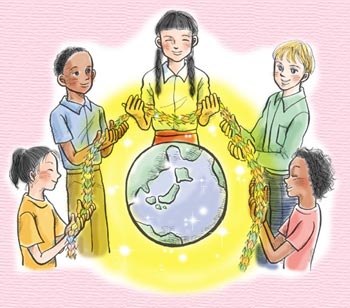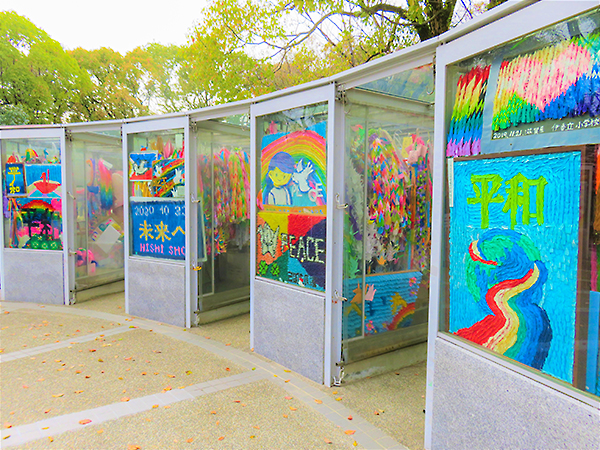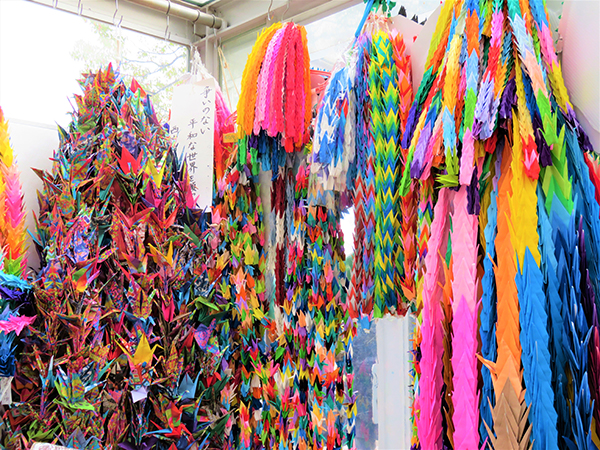6 Sadako's Hope Conveyed Around the World
A long time has passed since Sadako's short life ended at the age of 12. The Sadako story has touched many hearts, and letters and paper cranes continue to be sent to the Children's Peace Monument from around the world.

Symbol of Peace
Books and films have brought Sadako and the Children's Peace Monument to people around the world. Untold numbers have learned through her story that innocent people continue to suffer many years after the bombing - that atomic bombs eat away at life in a particularly cruel way.
Though Sadako is gone, because her hopes and courage touch people's hearts across the boundaries of nationality and time, she has become a symbol of peace.
BOOKS
Children of the Paper Crane |
by Masamoto Nasu | M.E.Sharpe | 1991 |
Sadako and the Thousand Paper Cranes |
by Eleanor Coer | G.P.Putnam's Sons | 1993 |
Sadako will leben(in German) |
by Karl Bruckner | Jugend und Volk | 1987 |
VIDEOS
Sadako And the Thousand Paper Cranes |
Based on the book by Elenor Coerr,
Produced and directed by Geoge Levenson, Narration/Liv Ullmann, Solo Guitar/George Winston, Artwork/Ed Young |
Sadako Project, 1991 | |
On Paper Crane: |
Based on the concept by Miho Cibot-Shimma, Animation Production/Mushi Production |
Peace Anime no Kai, 1994 |
|


"Sadako" is watching.
Nevertheless, nuclear weapons have not disappeared from the Earth. Wars that carry the threat of their use continue to break out around the world.
Entrusting to it their dreams of a peaceful future, people of the world still offer paper cranes to the Children's Peace Monument. The figure of Sadako holds a paper crane, lifting up the hope that no more children anywhere will lose their lives to war.

